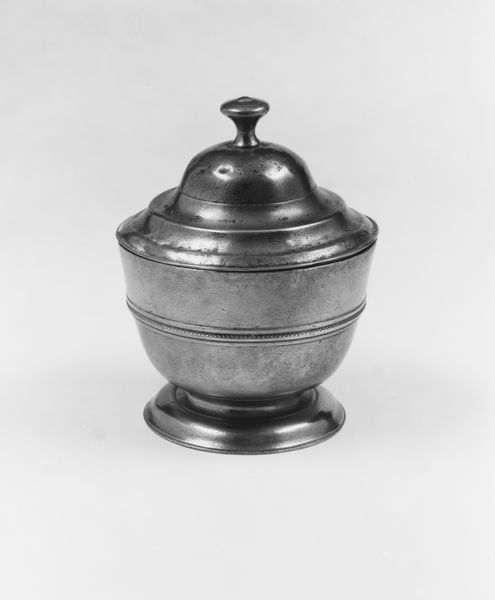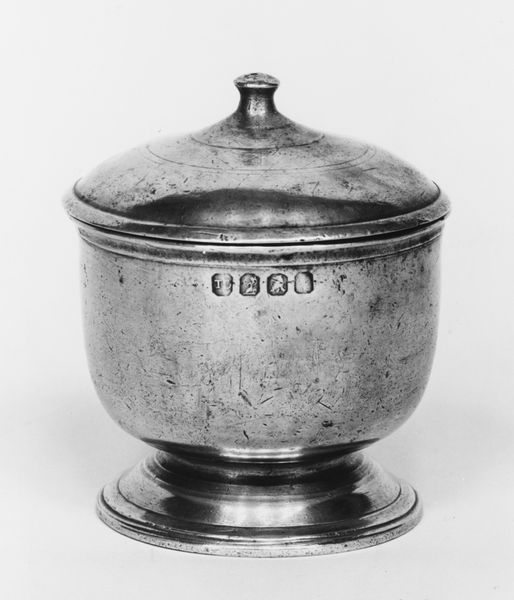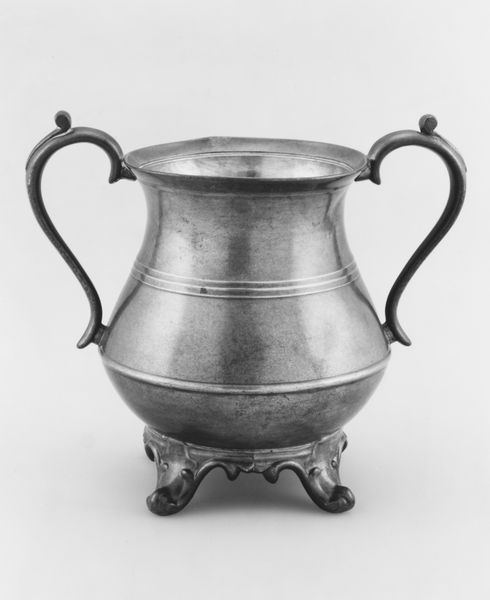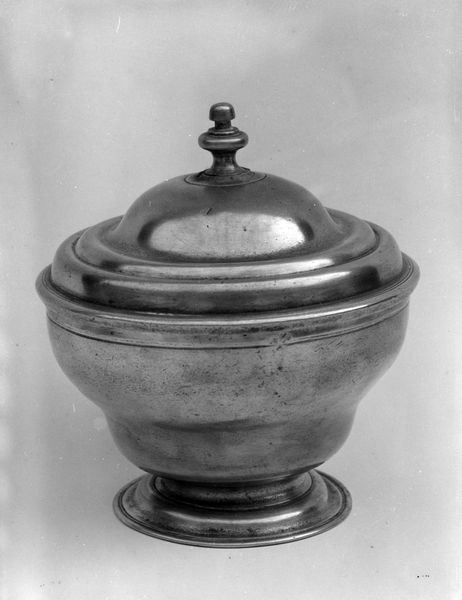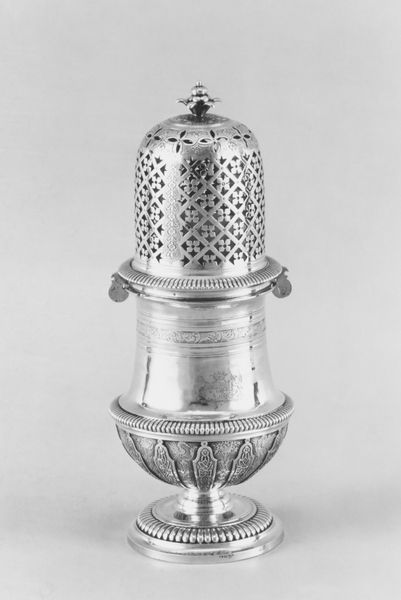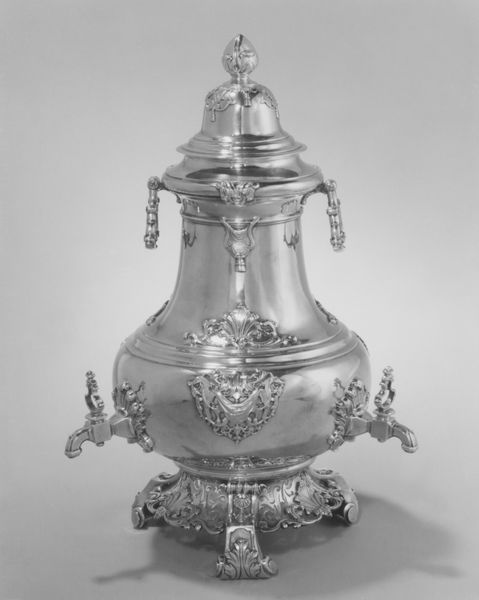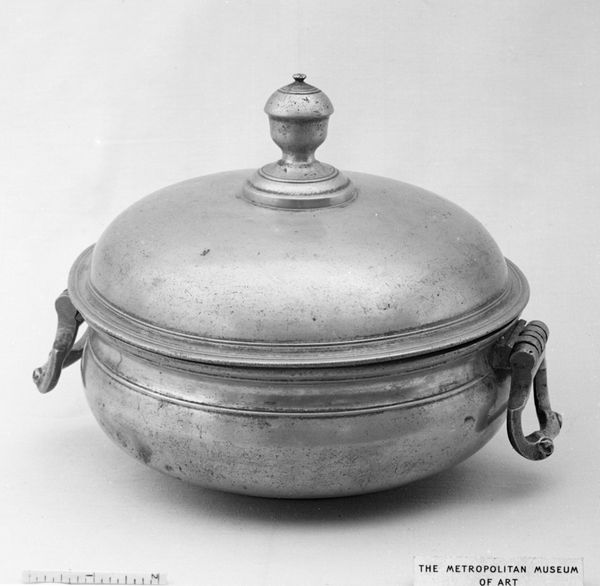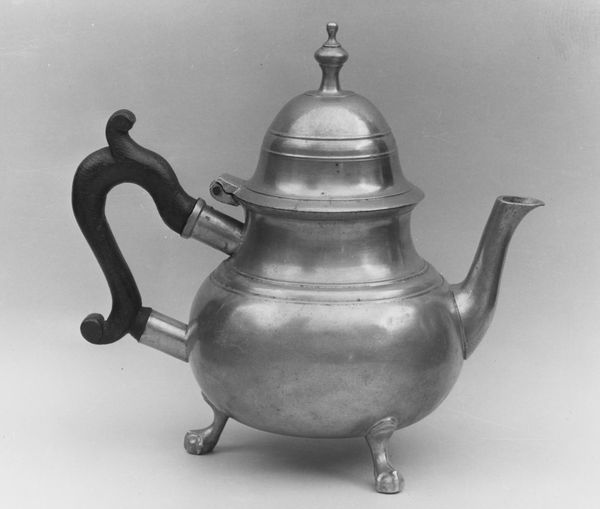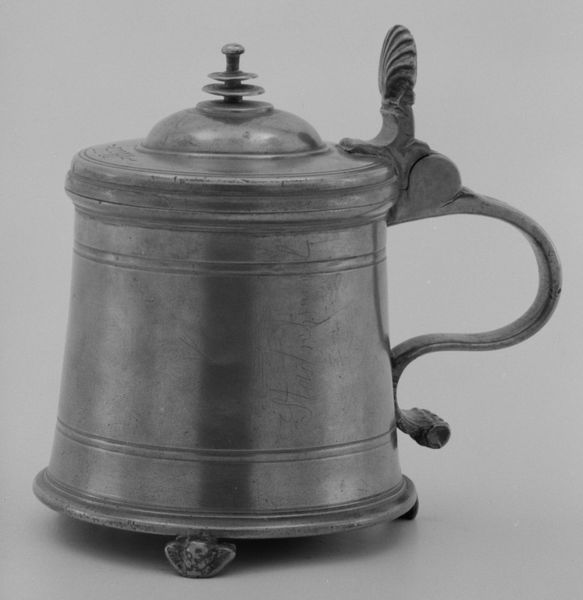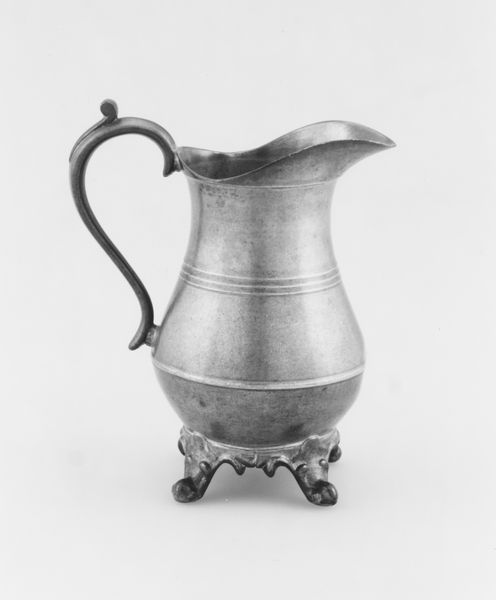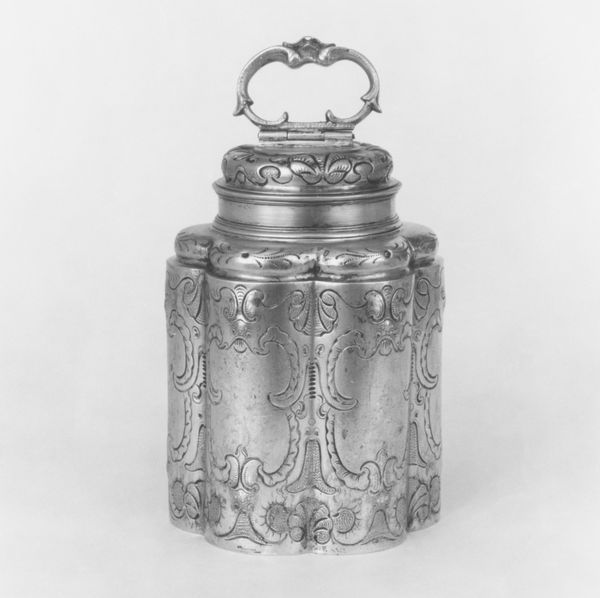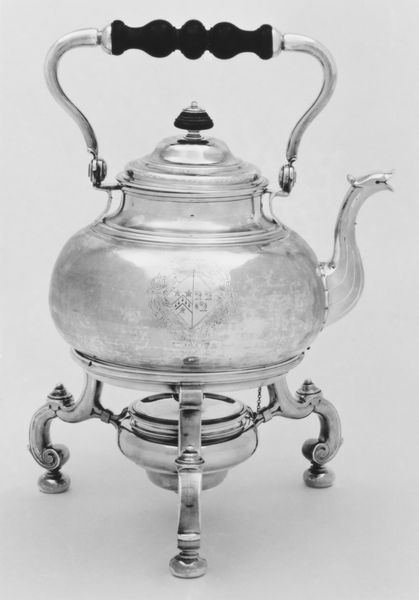
metal, sculpture
#
metal
#
sculpture
#
sculpture
#
black and white
#
united-states
#
decorative-art
Dimensions: H. 7 5/8 in. (19.4 cm); Diam. 7 7/16 in. (18.9 cm)
Copyright: Public Domain
Editor: We are looking at a "Sugar Bowl", likely crafted between 1854 and 1865 by Thomas Danforth Boardman. It's a metallic sculpture here at the Met. I'm struck by the formal simplicity, and the repeated use of horizontal bands – what details do you notice first in this piece? Curator: Formally, my eye is drawn to the object’s symmetry, disrupted only by subtle variations in texture and finish across the different sections. Observe the smooth, almost reflective plane of the lid compared to the subtly textured body. Editor: Yes, I see that. The base also has those ornately decorated feet; is there a deliberate contrast? Curator: Precisely. The piece presents a study in contrasts – smooth versus textured, simple geometric shapes versus decorative flourishes. What purpose do you think is served by these arrangements? Editor: Maybe to highlight the different sections, like the lid being special or precious? Curator: It does function to draw one's attention, but the interplay extends beyond mere decoration. Consider how the fluted edges of the lid echo the curvature of the bowl itself, creating a cohesive visual rhythm. Even in its monochrome presentation, can you see a balance? Editor: I didn't catch the fluted edges, good eye! Looking at the balance, I see now that there's careful modulation within a restricted set of elements. What are your impressions of it? Curator: It serves as a reminder that true artistry lies not in extravagance but in the masterful arrangement of fundamental forms. The bowl's success resides in the elegant dialogue between its disparate elements. Editor: I learned how much the artistry comes from such details of structure, it is a perfect demonstration of the balance of form and texture in an everyday object.
Comments
No comments
Be the first to comment and join the conversation on the ultimate creative platform.
